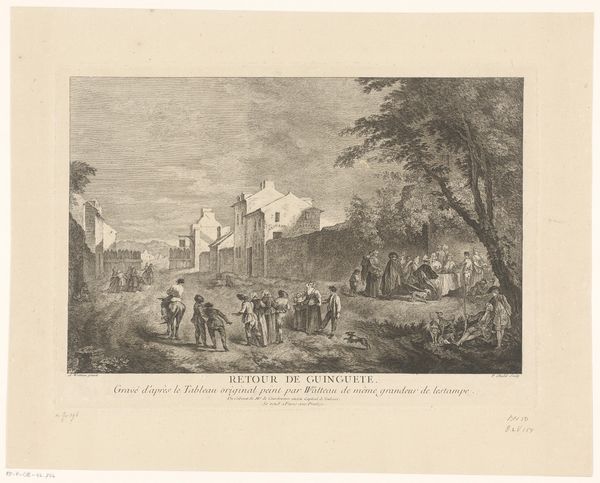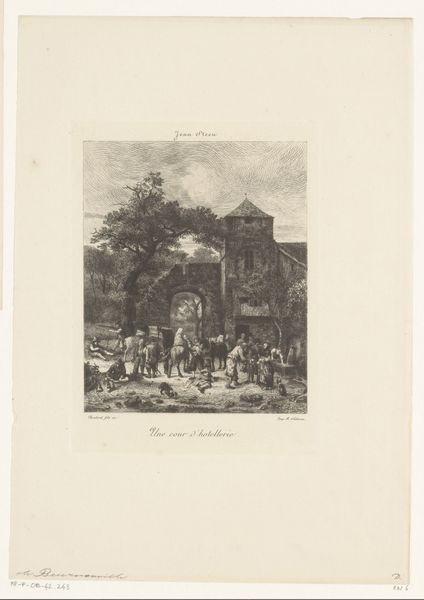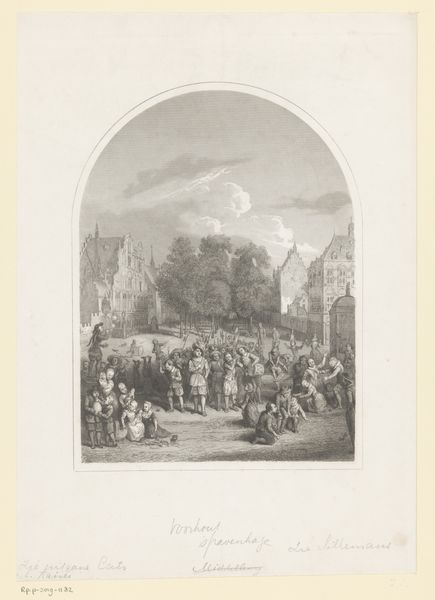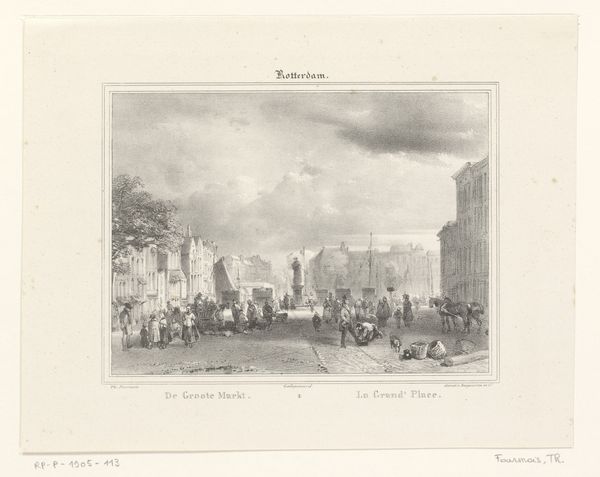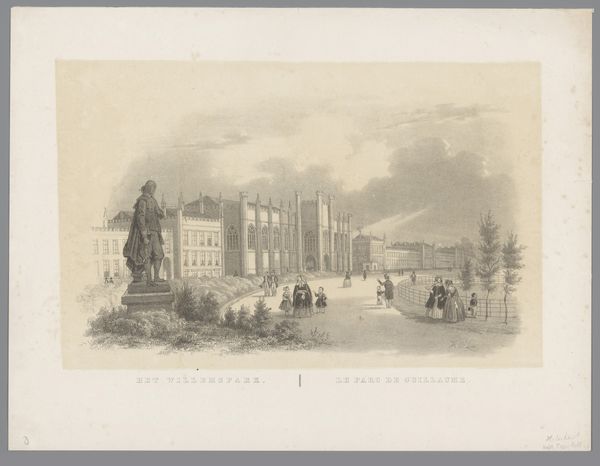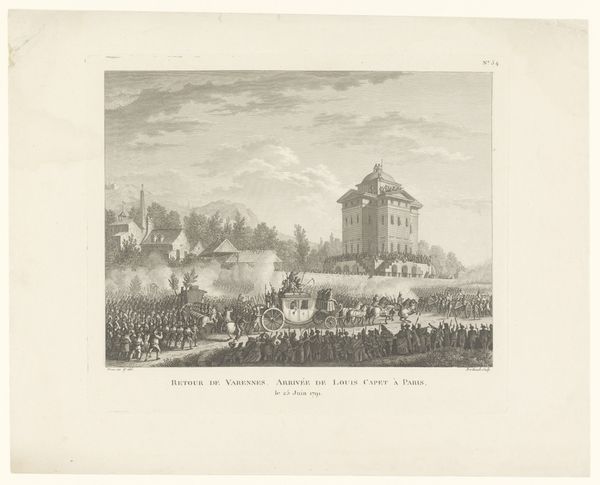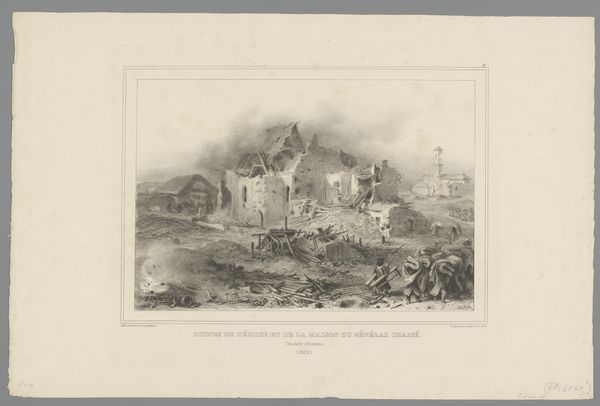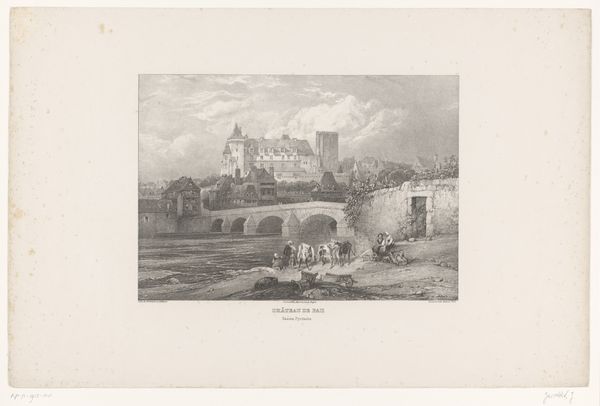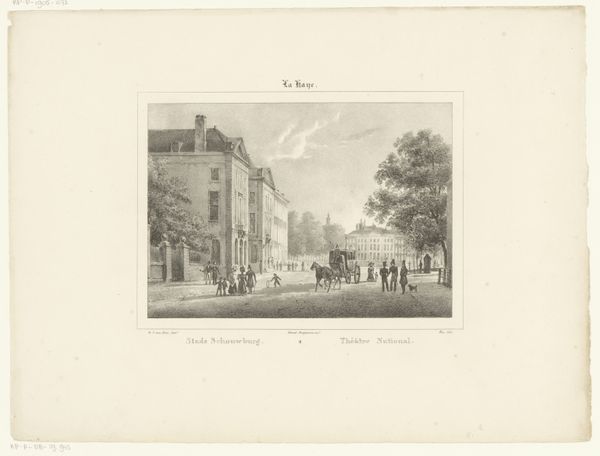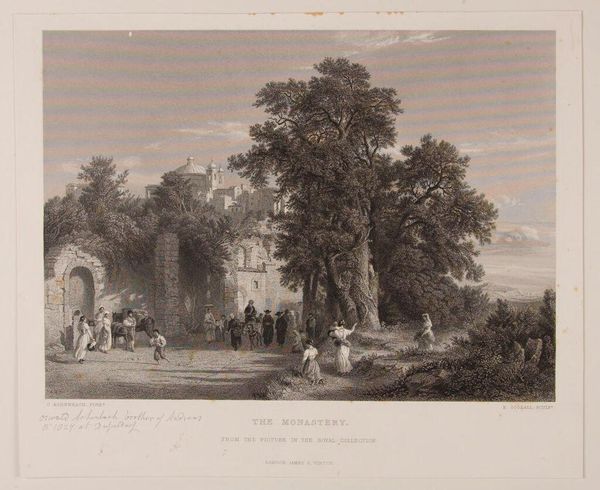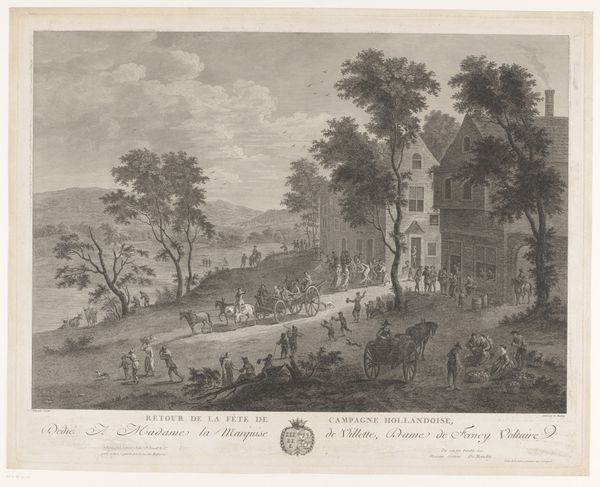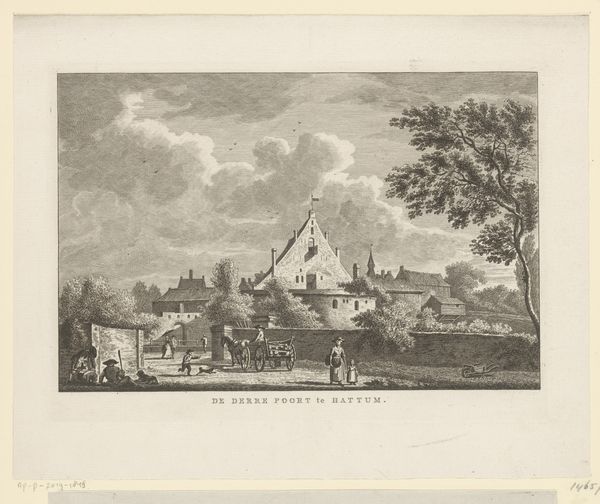
Rijtuig met koning Karel X van Frankrijk houdt halt bij een triomfboog bij Tinqueux 1825 - 1833
leonjeanbaptistesabatier
Rijksmuseum
print, engraving
neoclacissism
line
cityscape
history-painting
engraving
realism
Dimensions: height 416 mm, width 545 mm
Copyright: Rijks Museum: Open Domain
Editor: So, here we have “Rijtuig met koning Karel X van Frankrijk houdt halt bij een triomfboog bij Tinqueux,” made between 1825 and 1833, a print by Léon Jean Baptiste Sabatier at the Rijksmuseum. It looks quite staged and grand. The people all seem to be celebrating the King. What exactly is going on here? Curator: Well, looking at it through a historical lens, we see the politics of imagery at play. This print documents Charles X's reign, a period marked by attempts to revive the Bourbon monarchy's prestige after the Revolution. How do you think the artist’s choice to depict this triumphal entry affects the reception of Charles X? Editor: It definitely makes him look important. The triumphal arch, the crowds… it's all designed to convey power. But knowing this was made some time after the actual event, does that change how we should see it? Is it pure propaganda? Curator: Not necessarily pure propaganda, but certainly a carefully constructed image aimed at shaping public perception. Consider how prints like this were circulated. They became tools in solidifying the image of the monarchy and communicating it to the broader populace. Does knowing that the print is Neoclassical affect how you understand this political imagery? Editor: I guess so, that style itself lends it more legitimacy? The clean lines and formal composition probably imply order and strength. It’s interesting to see how the style really emphasizes the subject and influences your reaction. Curator: Precisely. We also should be questioning how this narrative might exclude different opinions, or mask realities behind a veil of celebratory spectacle. It prompts one to wonder how much artistic portrayal overlaps or diverges from genuine political stability. Editor: I never thought about a print needing such an in-depth understanding of political context, but I think I am closer to getting there! Curator: Understanding the historical environment lets you unpack more layers than expected.
Comments
No comments
Be the first to comment and join the conversation on the ultimate creative platform.
